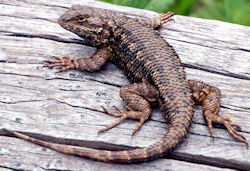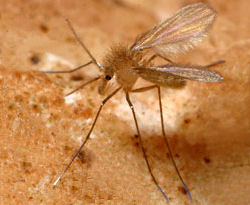Discovery of the Carriers of Malaria in Lizards
Since the late 1800s, biologists knew that malaria of mammals and birds is carried by blood-feeding insects, but how reptiles got their infections remained a mystery. Malaria caused by Plasmodium mexicanum is often found in lizards in Mexico and western North America. (This parasite does not infect humans.)
In 1970, Steve Ayala and Dwayne Lee from the Department of Entomology at the University of California, Berkeley reported that Plasmodium mexicanum underwent its full insect development in Phlebotomine sandflies. Sandflies were know to carry many other viral, bacterial and protozoan infections, but this was their first association with the parasites that cause malaria.

Saurian malaria: Development of sporozoites in two species of Phlebotomine sandflies, S Ayala & D Lee, Science, 167(3911), 891-892 (Cover photograph shows a malaria oocyst on a sandfly stomach wall releasing its infective sporozoites; Steve Ayala and Dean Furman).
New infections developed when sporozoites from the sandflies were injected into other lizards.

Fence lizards in Mexico and the western US often suffer from malaria.

Malarial parasites develop inside a vertebrate host's red blood cells.

Phlebotomine sandflies carry several different blood parasites of North American reptiles.